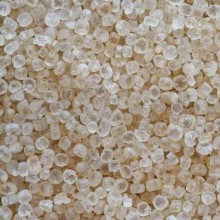
Auxiliary products
Modern agriculture and high yields cannot be imagined without effective chemicalization of crops. High-quality use of pesticides and agrochemicals is impossible without the use of auxiliary agrotechnical means.
The most common auxiliary preparations:
- adjuvants (surfactants);
- water conditioners;
- foam suppressors;
- sprayer tank cleaning agents;
Adjuvants are various substances that can reduce the surface tension of water and increase the area of solution spreading over the treated surface. Adjuvants are sometimes called surface-active substances, or simply surfactants. However, recently, a large number of new products based on ethoxylated alcohols and various modifications of siloxanes have appeared on the market. Preparations such as Trend-90 and its analogues are capable of reducing the surface tension of water to 40 mN/m. This is two times less than the normal surface tension, at which a drop of water lying on a leaf or other smooth surface usually forms a ball or ellipse. But add a surfactant - and the surface tension decreases, and the drop spreads over the surface. By the way, drops with high surface tension are more likely to bounce off leaves.
The above-described surfactants are usually used together with herbicides. The increase in the effectiveness of herbicides when used together with surfactants is due to the fact that the adjuvant molecules move between water molecules and push them as far apart as possible. At the same time, surfactants are able to reduce the tension of a drop of water only to a certain level.
To achieve a greater effect of reducing surface tension, preparations based on modified siloxanes are used. They are able to reduce surface tension much more strongly: that is, up to 25 mN / m.
These preparations have found wide application in greenhouses, gardens, field crops; They are used with various pesticides, growth regulators and micronutrient fertilizers. The use of such preparations is especially relevant for leafy crops (soybeans, potatoes) or heavily pubescent (tomatoes); with insecticides when working with a high number of imago; with desiccants based on diquat when treating sunflower, soybeans, peas and potatoes.
It is recommended to use siloxanes with herbicides if there are many weeds in the field that are quite heavily covered with a waxy coating. A striking example of this is gulyavnik and white goosefoot. Under unfavorable weather conditions (whether it is wind or cool weather), the wax coating increases, and only 50 percent of the original herbicide rate can penetrate through it. To prevent loss of efficiency, use siloxane-based adjuvants at the recommended consumption rates.
Water conditioners: preparations that can improve its quality. Water is essentially a natural and universal solvent that people use to prepare working solutions for spraying or fertigation. However, its physical and chemical properties do not always meet technical requirements. And sometimes, to maintain the effectiveness of pesticides, it is necessary to prepare the water in advance.
For many pesticides, water quality plays a key role in realizing their effectiveness. Conditioners balance the acid-base balance, remove hardness salts and neutralize carbon-containing impurities.
The fact is that for most fungicides, herbicides and insecticides, the most favorable acidity values are within the pH range of 4–6.5.
In such slightly acidic solutions, the preparations retain the greatest stability. Accordingly, when dissolved in highly alkaline or highly acidic water, their effectiveness will decrease.
The situation is somewhat different with sulfonylurea-based herbicides. These preparations are recommended to be dissolved in water with a pH value close to neutral - 7, or even slightly alkaline. And at pH5, acid hydrolysis occurs, leading to a sharp decrease in the effectiveness of herbicides.
Another serious problem associated with water quality is the presence of hardness salts and impurities in it, which can react with the pesticide and neutralize it. In this case, a conditioner can help.
But it should be remembered that, unlike adjuvants, which must be added to the sprayer tank last (this is due to abundant foaming), water conditioners must be added to the tank with water first. And only after that can the remaining components of the tank mixture be added.
Foam suppressors are auxiliary agents that help get rid of the foaming of some pesticides. Excessive foaming contributes to the loss of part of the active substance of pesticides, complicating the work of filling the sprayer.
Sprayer tank cleaning agents are special detergents that contain, in addition to surfactants, complexones, which not only effectively clean the tank from used preparations, but also help clean the nozzles and pipeline fittings.

